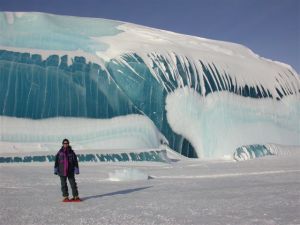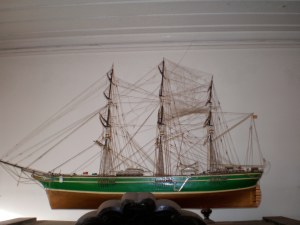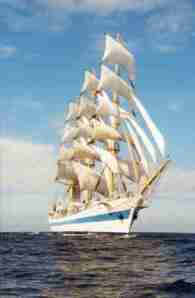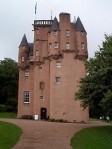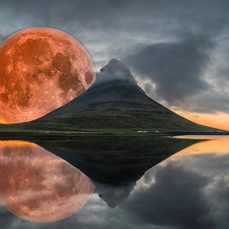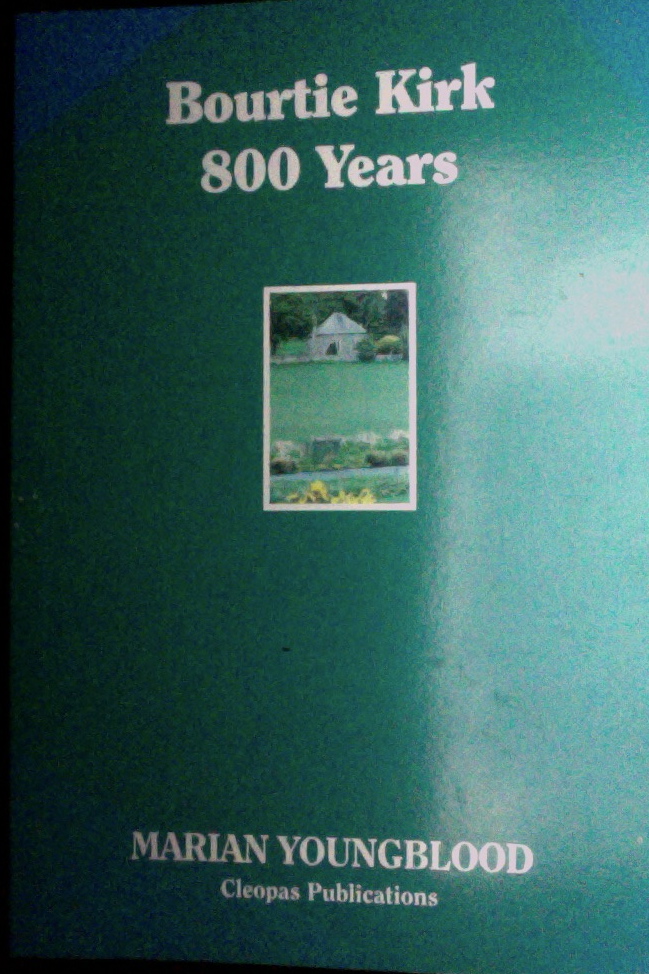Space Weather 30-year Storm: Earth fights back
I need hardly remind residents of Scotland that we have only just weathered the thirty-year storm. Most households living through four solid weeks of sub-zero temperatures in an Atlantic weather zone (even with the miracle of central heating) will remember this winter (and last month especially) for many years to come.Fortunately our civilization has advanced enough so that we experienced minimum electrical ‘outages’, despite heavy snow, icicles and ice on power lines. There were, however, multiple power ‘surges’ and computers countrywide were frozen in mid surge. Mac and pc-owners and related computer businesses are still counting the cost. Curry’s have been doing a roaring trade in replacement laptops!
It seems to have hit a lot of young ones harder than they might have thought: not that closing schools and cancelling bus and train services are a hazard; more time to make snowmen, play and enjoy winter sports, you might think. Lack of reliable public transportation, however – counting on any public services, in fact – four weeks without refuse collection borders on neglect, were commuters’ and householders’ concerns. Abandonment, remoteness and surprise at being cut off suddenly are what hit the teens hardest, I think because they are unaccustomed to having their social life curtailed by ‘weather’ and few had experienced conditions such as these in their young lives.
Some of us older oldies remember the winter of 1981/2 with shivering empathy; electrical failure, power cuts, snow drifts higher than houses; evacuating and rescuing neighbours, birds frozen overnight in trees. But that was back in the Thatcherite era, before the internet, when we didn’t EXPECT everything to run on time, snow ploughs to get through, petrol in cars not to freeze.
Human culture has changed in nearly 30 years: Even in the modern backwater of Aberdeenshire, the County of no motorways, the self-styled Oil Capital of Europe.
For those unfamiliar with our ways, this corner of Scotland – the Northeast triangle between Rivers Don and Dee and the balmy Moray Firth – has always flourished, but more than that, it looks after its own. Rather, I suppose, like Geordies idolizing their working-class heroes that went ‘down the pits’ or Scousers joking ‘don’t bomb Iraq; nuke Manchester’. Parochial in the extreme.Unlike some other lesser-urban metropolises, however, (Dundee, Perth, Stranraer), Aberdeen has always pulled through its hardest times: Dundee used to be known (an age ago, when the world was young) for its Jute, Jam and Journalism. Now it is home to none of these; but it has Robert Scott’s ‘Discovery‘, the Tay Bridge and it’s on the way to St. Andrews, which every golfer in the world has heard of; i.e. it participates peripherally in tourism, but some of its poorer districts are in appalling shape.
Perth floods every year and millions of national money poured in to rescue low-level housing has been a nightmare. Stranraer we won’t go into. It’s no longer on the way to anywhere.
Then there’s Aberdeen.
Perched on the westernmost limb of the North Sea’s mild Gulf Stream current, its dry climate (usually, rain from the west is captured by the Grampian mountains before it reaches the plain) and its remarkable latitude (57ºN2ºW ), akin to central Alaska, give it a climatic anomaly. Its farming hinterland was rich in Neolithic times and has grown richer.
A century and a half ago the city was hub to a thriving fishing industry; its harbours built, housed and skippered trawlers, tall clipper ships, deep sea schooners and whaling vessels. Thermopylae and Elissa were built here. Names like Alexander Hall & Sons, John Lewis and Sons, the Devanha Fishing Company sprang from everyone’s lips. As a merchant marine capital it was second only to Glasgow in Scotland and Liverpool south of the border.
Aberdeen, however, was never one to have only one egg in one basket: it was also the sole exporter of granite to needy growing urban centres: London streets were indeed paved with (Aberdeen granite) gold. Craigenlow quarry at Dunecht supplied the English capital with tons of its ‘cassies’ or granite sets – hand-cut granite blocks the size of a gingerbread loaf – to meet the demands of a city experiencing growing Victorian traffic problems. If they had but known…
At the height of Georgian expansion, Aberdeen city burghers were so wealthy, their coffers overflowing from the ocean tea trade, the Baltic route, their fishing ports supplying Europe’s tables (nowadays it’s the other way around), their granite exported the world over; that they chose to beautify: and the mile-long boulevard known as Union Street was built in 1801-05. This grandiose gesture – a feat of engineering which levelled St. Catherine’s Hill and carried the extra-wide thoroughfare across arches built over the previous lower Denburn and ancient market Green – almost bankcrupted the burghers, but brought the city fame to add to its already growing fortune.
As early as the mid-18th century, Aberdeenshire’s famous Baltic merchants continued to bring their fortunes back home; so the county continually thrived, regardless of the ups and downs of a world economy. Robert Gordon (1688-1731), founder of the Robert Gordon Hospital, now RGU, was famous for lending money made in the Danzig trade to Aberdeen businessmen who needed large working capital at even larger rates of interest. ‘Danzig Willie’ Forbes ploughed his fortune from the Baltic trade into the building of exquisite Donside château Craigievar between 1610-1625 on the family estate of Corse, when he was already landowner of Menie estate on the Belhelvie coast north of Aberdeen. John Ramsay, an Aberdeen merchant in 1758 built his palladian mansion at Straloch. Others followed suit. The county is today littered with stately Renaissance piles and Georgian mansions more appropriate to the valley of the Loire, the home counties or the wilds of Gloucestershire.Within this mix stir a couple of ancient universities – one founded in 1495, the other in 1593, both fostered and supported through the centuries by Aberdonian merchant success.
The world joke about the Aberdonian who watches his pennies is not entirely untrue. And the tradition goes back farther than the fifteenth century.
Even more relevant to the characterization, perhaps, is the fact that Aberdeen Harbour (presently run by the independent entity Aberdeen Harbour Board) is in fact the oldest running business enterprise in the United Kingdom of Great Britain, having been founded by charter signed by King David I in 1136. The business head of the kingdom resides on the edge of the North Sea.But the bell tolled. The fishing industry worldwide killed its own small fry: when container ships and tankers beheaded sailing vessels, similarly Icelandic and Norwegian refrigerated freighters signalled the death knell for trawlers and owner-operated fishing boats; and Aberdeen’s shipbuilding days were over.
In the early 1970s, Britain was experiencing the three-day-week, unemployment stats for the country were the highest then known, and even the granite industry declined. Its clients metamorphosed from those who appreciated polished stone to faceless ‘councils’ and ‘road departments’ which required the precious quartz and gneiss resource to be ground into dust-like fragments which could be mixed with tar and spread in increasing quantities on the nation’s arteries.
It looked as if Aberdeen, like every other Scots city, might founder on the rocks of history.
Then, lo and behold, along came oil. Bubbling up from below the North Sea in 1971, another industry was born. And the ‘silver city with the golden sands’ was perched on the shoreline, ready to receive it.It is said that because of its very geographic isolation the county learned to take care of itself. And its humour has a lot to do with its character.
Now that there is talk of worldwide recession and dwindling of the oil resource, the current Aberdonian humorous response is ‘oil goes out, Donald Trump comes in’. This refers to the New York entrepreneur’s £1 billion golf course resort where sand dune reinforcing work has just begun on the very landholdings of Menie once owned by Danzig Willie. Aberdeenshire is not averse to turning full circle. It has so far weathered many storms through centuries of change.
So how did we fare in this last Great Storm? How did the planet fare?
Greece had 100ºF temperatures at Christmas and Abu Dhabi and Dubai had HAIL the day before the launch of the 2,717-feet Burj Khalifa tower in the first week of January.
Scotland and Aberdeenshire in particular were at the time experiencing the grip of an Arctic winter, with traffic on all roads down to minimum and gritting and snow-ploughing said by Council spokesmen to be ‘impossible’. While they reported worries that supplies of salt from the Cheshire salt mine might be exhausted, citrus orchards throughout the state of Florida were hit by snow and frost lingered long enough to decimate their total citrus crop for 2010.
At the same time Mount Nyamulagira in a sparsely populated area of the Democratic Republic of Congo erupted, threatening an enclave of rare chimpanzees.
Eureka and Haiti had 6.5 and 7.2 Richter earthquakes respectively, while inland Northern California and Southern Oregon, usually inundated with snow, received not one drop. States of emergency were declared for Los Angeles, Orange, Riverside, San Francisco and Siskiyou counties and as the rainstorm headed east, floods swamped the Arizona desert, threatening homes and killing migrant birds. Las Vegas, Nevada had more rain in two days than for the total year of 2009 (1.69 inches). Alligators in the Everglades froze to death.
France’s Mistral blew early this year, wreaking havoc and damage to vines and vineyards in southern départements of Lyon and Provence; the Riviera harbours of St Tropez and Marseille suffered damage to private yachts.
Since the snowmelt arrived in Scotland in mid January, it is superfluous to mention that the resulting floods have routed gutters and drains in cities and country towns and overflowed ditches in outlying country areas. Perth (again) and Inverurie, Huntly and Kintore were unable to cope with the deluge. These levels of precipitation bring Aberdeen’s rainfall statistics for the year 2009 to mid January 2010 to 101.23 inches, for a county normally experiencing 33.6 inches per annum.
The Earth doesn’t like what we’ve been doing to her in the last thirty years. She’s beginning to fight back.
Muckle Spate and Sunflower Update
In case no-one’s noticed: it’s November. Snow has fallen in Colorado, the Rockies, Kamchatka and Iceland. Frost came to Northeast Scotland, but it was puny compared with what descended last week AND last month AND September: we’re talking floods here. What they used to call – when country people were country folk – a Muckle Spate.Now there have been spates and floods before. Weather in Scotland, or Ultima Thule, is and always has been the topic which gets most discussion year-round. It’s because of its location:
Americans in particular are amazed to learn that the Moray Firth in Scotland lies at the same latitude as Juneau, Alaska.
For the latitude of Ultima Thule, the farthest and northernmost point of habitable land, read nine degrees below the Arctic Circle, or what is euphemistically named the Northern Temperate Zone. So it’s not unreasonable to experience weather conditions which are enormously influenced by the Atlantic Ocean on one coast and the North Sea on the other.
At the northern end of the Atlantic, the Atlantic Conveyor kicks in, swimming through the Bristol Channel, up the Irish Sea, through the Minch and cresting at the entrance to the Pentland Firth. A small portion of this powerful warm current (more affectionately known as the Gulf Stream or North Atlantic Drift) noses its way along the Pentland Firth between Orkney and Mainland Scotland and curls back south to run inland along the Moray Firth, so-called Aberdeenshire’s North Coast. In historical summers, it has been known to create balmy climes for residents of these northern shores.For those not aware of these obscure locations in an otherwise frozen belt of Icelandic waters, GoogleEarth will happily provide up-to-the-minute and up-to-the last aerially-photographed section of the Moray Firth, Orkney and Shetland Isles and Mainland Scotland.
Aerial photographers, however, have had a difficult time of it these last three months. Unless, that is, you were racking up overhead shots of flooded football pitches and river basins fulfilling their description as ‘flood-plains’. Some photographers have documented Council employees who have had to stop road-laying and sweeping to race to the aid of a vast area of housing and newbuild schemes on the ‘rescue’ list in need of sandbags, rehousing the homeless, or pumping out flooded basements and High Street shopfronts.The fact that these new houses were built on ‘flood-plain’ in the first place is something this blogger prefers not to discuss at this point.
Abnormally high rainfall in September washed out roads in the Highlands and Scotland’s West Coast at Oban and Skye. Over a four-day period in October, rivers Don and Dee in Aberdeenshire overflowed and took out roads and bridges in Banchory, Kintore and Inverurie and claimed the life of a farmer. The Rivers Spey and the Lossie at Elgin on the Moray coast reached record high levels. The Deveron at Banff flooded golf courses, links, part of the Old Town and made the A98 coast road impassible.
Overnight on Hallowe’en and into the early hours of November 1st, the total expected rainfall for the month of November fell in six hours, and put Aberdeenshire Council into the red in its attempts to rescue and rehouse residents made homeless by rivers Carron and Cowie bursting their banks at Stonehaven and the rivers Bogie and Deveron flooding new houses at Huntly.Aberdeenshire’s North Coast shares something in common with those river valleys in the glacial excavation grinding through the Mounth, the Cairngorms, and the Grampian and Ladder Hills. They have always had extremes of weather. Prophets of global warming suggested cooling temperatures for North Britain in 2005. Yet in the interim, except for the Wet Summer of 2009, Scotland has experienced record high temperatures. House building in floodplains has progressed apace. No wonder Mother Nature decided this year to rebel and balance the books.
She did something similar in the summer of 1829. It was the year of the Great Flood, or in the Northeast vernacular, The Muckle Spate o’ ’29.
If records are to be believed, three months’ worth of rain fell in one week in August of that year, inundating crops and farmland, transporting cattle, sheep, dogs and men from their homes downstream for miles. Bridges were heavy casualties. Even those robust granite bridges built by General George Wade (1673-1748) in 1724 to withstand the weight of his marching troops and to guide his mapmakers through the wilds of Scotland on their first attempt to document the country for King George I. But two centuries have elapsed since then and road- and bridge-building has advanced a pace. Or have they?
In November, 2009, the Dee washed out the road and bridge at Banchory. Banff causeway was underwater and the Don bridge at Inverurie had water level with the arches. The Old Dee Bridge at Aberdeen was closed, as were roads involving bridges supplying Oldmeldrum, Kintore, Dyce, Turriff, Huntly, Stonehaven, Glass, Keith, Aberchirder, Ellon, Deskford, Banff, MacDuff, Elgin, Findhorn, Forres and Alford.For all our computer-generated map-making and architect-free design models of flood plains, physical geography and world climate patterns, one would think we had learned something. Last week’s freak storm suggests we haven’t.
I thought you’d like to read a brief excerpt from the vernacular poem ‘The Muckle Spate o’ ‘Twenty-nine’ by David Grant, published in 1915 by the Bon-Accord Press, Aberdeen. Its subject matter was focused on the River Dee at Strachan (pronounced Stra’an) – a mile of so from the base of the Mounth. If you need a translation, I might suggest you ask someone from the ‘old school’ and keep handy a copy of Aberdeen University Press‘s Concise Scots Dictionary. Enjoy.
Oh, yes. My giant sunflower: she weathered all three storms. She flowered during October, turning daily towards the light until it no longer rose above the shelterbelt of trees. Then, holding her south-facing stance, she pulled her yellow petals inwards as if to cloak her next (a sunflower’s most important) operation: to set seed. She showed a little yellow up until yesterday, but her colour is now mostly gone. Unlike her two less-lofty companions, she has not gone mouldy; but I hesitate to describe the activity presently occurring in her centre as ‘seed-setting’.It rained again today after three days of watery sun. I think she may still have time to stretch herself into the record books: as the latest-bloomer of all time to brave insane weather and still reach her goal: the Giant Sunflower of Ultima Thule. Spates be damned.
The Muckle Spate o’ ‘Twenty-Nine by David Grant
‘At Ennochie a cluckin’ hen wis sittin’ in a kist,
Baith it an’ her were sweelt awa’ afore the creatur’ wist;
We saw her passin’ near Heugh-head as canty as ye like,
Afore her ark a droonit stirk, ahint a droonit tyke,
An’ ran anent her doon the banks for half-a-mile or mair,
Observin’ that, at ilka jolt, she lookit unca scare,
As gin she said within hersel’ – ‘Faur ever am I gyaun?
I nivver saw the like o’ this in Birse nor yet in Stra’an.
Faur ever am I gyaun, bairns? Nae canny gait, I doot;
Gin I cud but get near the side, I think I wad flee oot.’
We left her near the Burn o’ Frusk, an’ speculatit lang
Gin she were carri’t to the sea afore her ark gaed wrang,
An’ may be spairt by Davie Jones to bring her cleckin’ oot,
Gin she wad rear them like a hen or like a water coot.’

